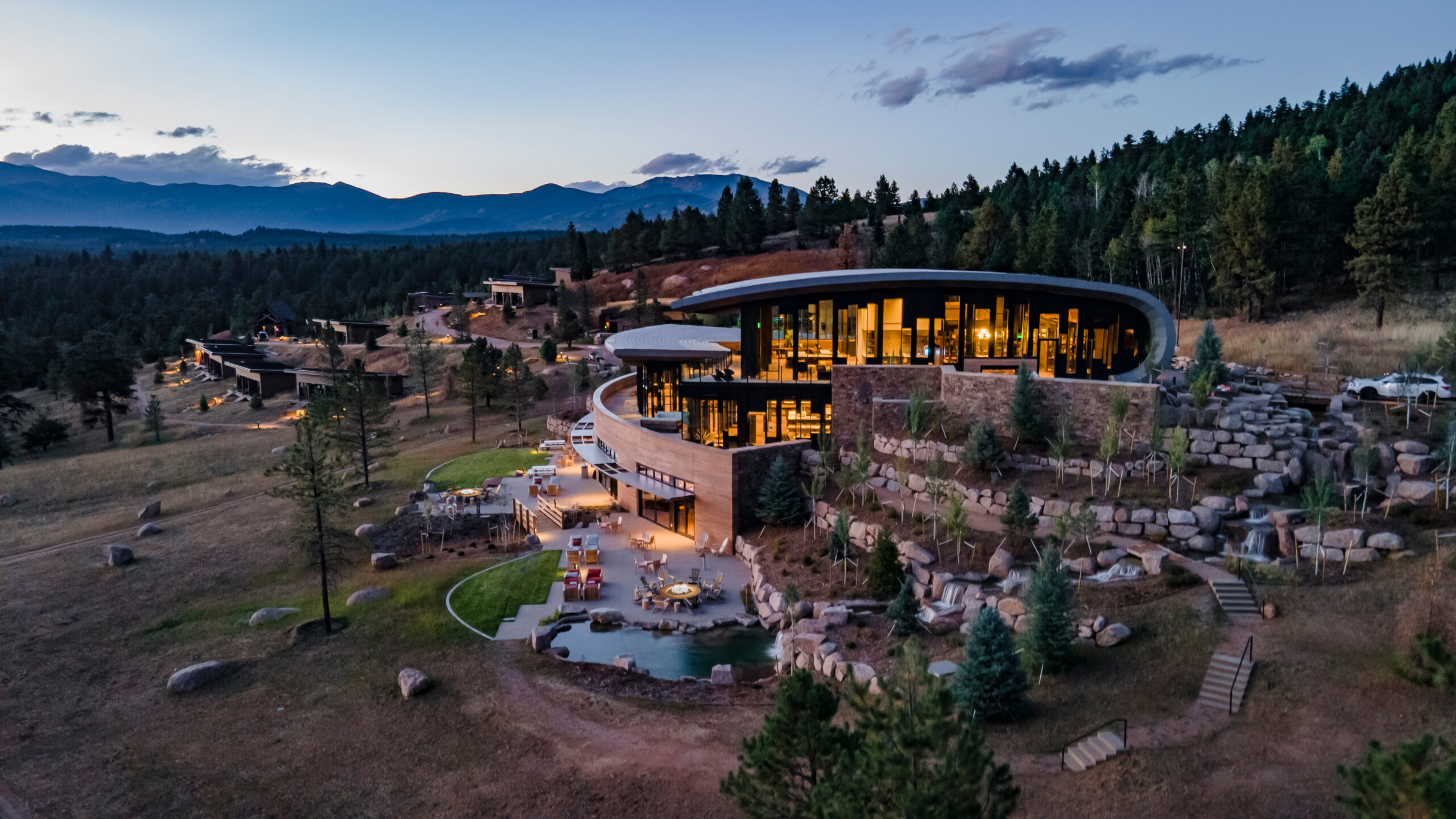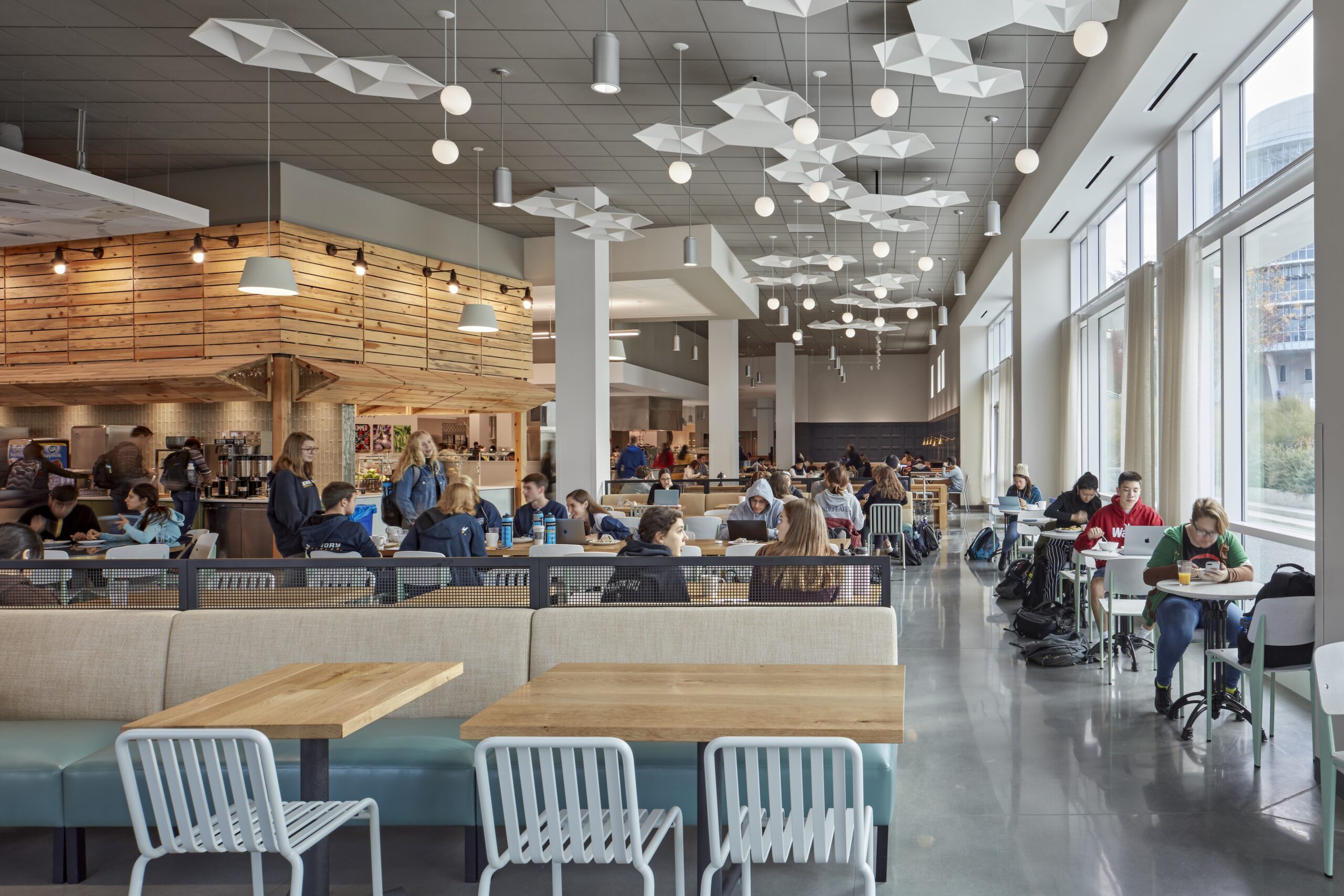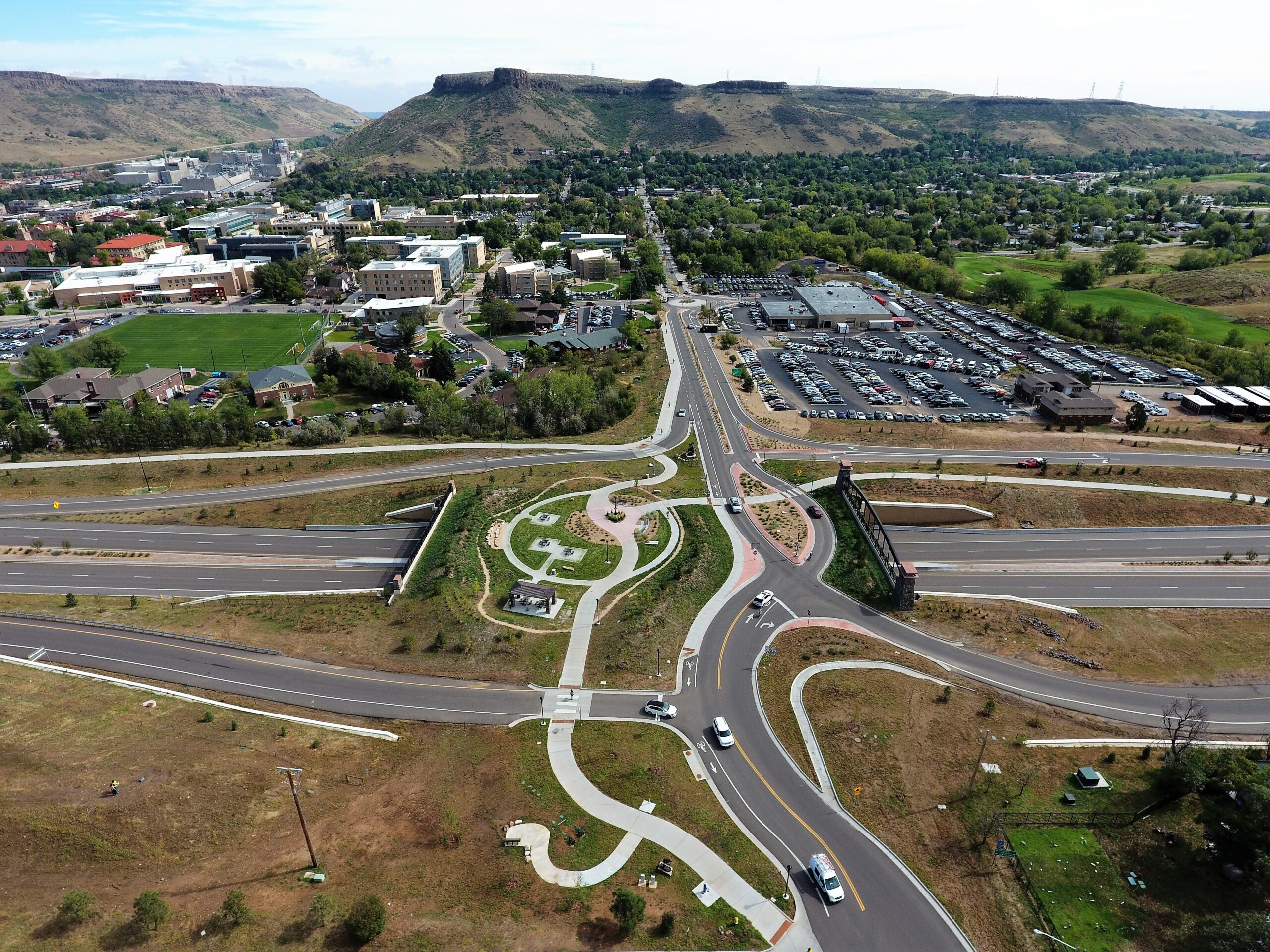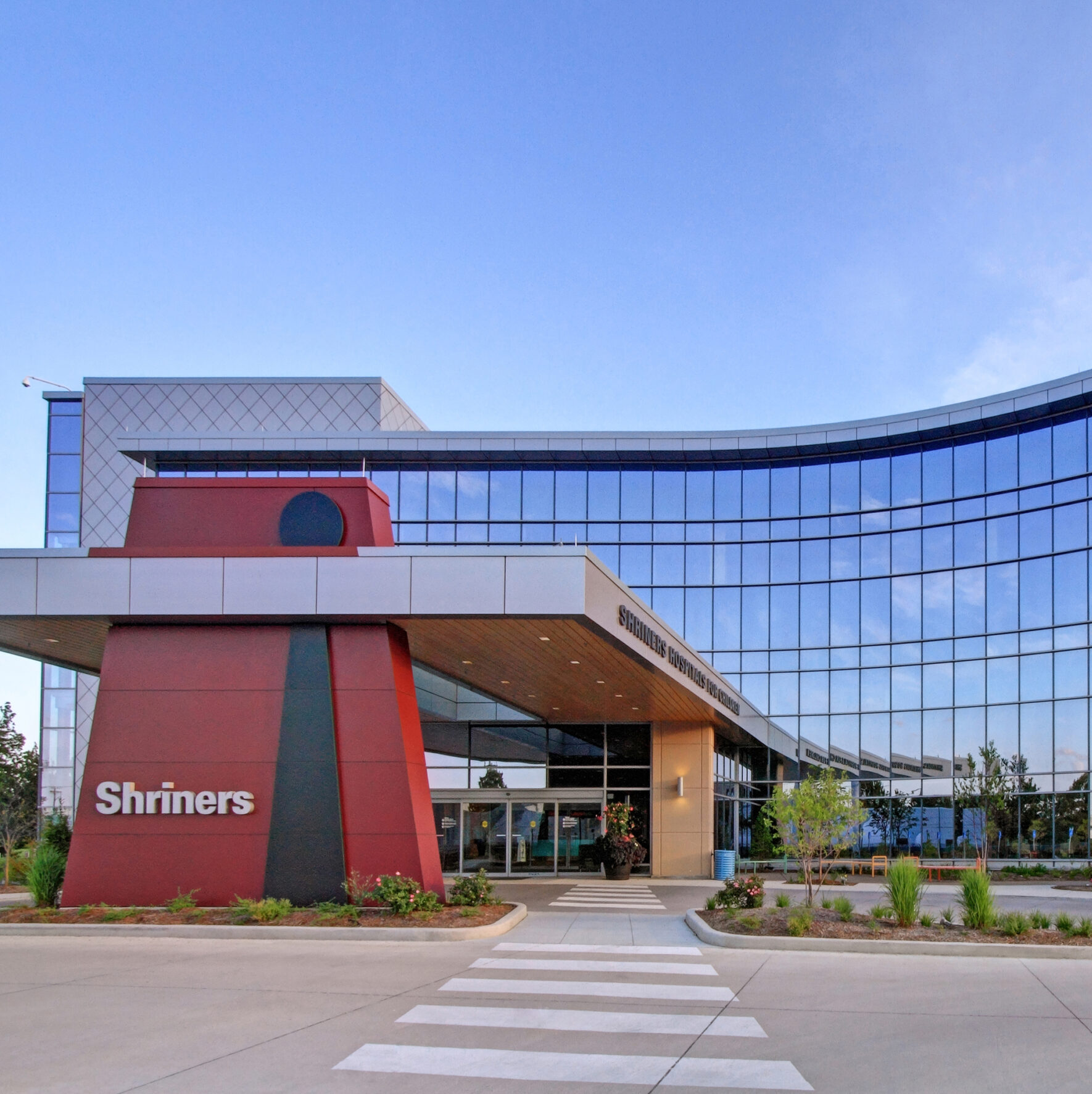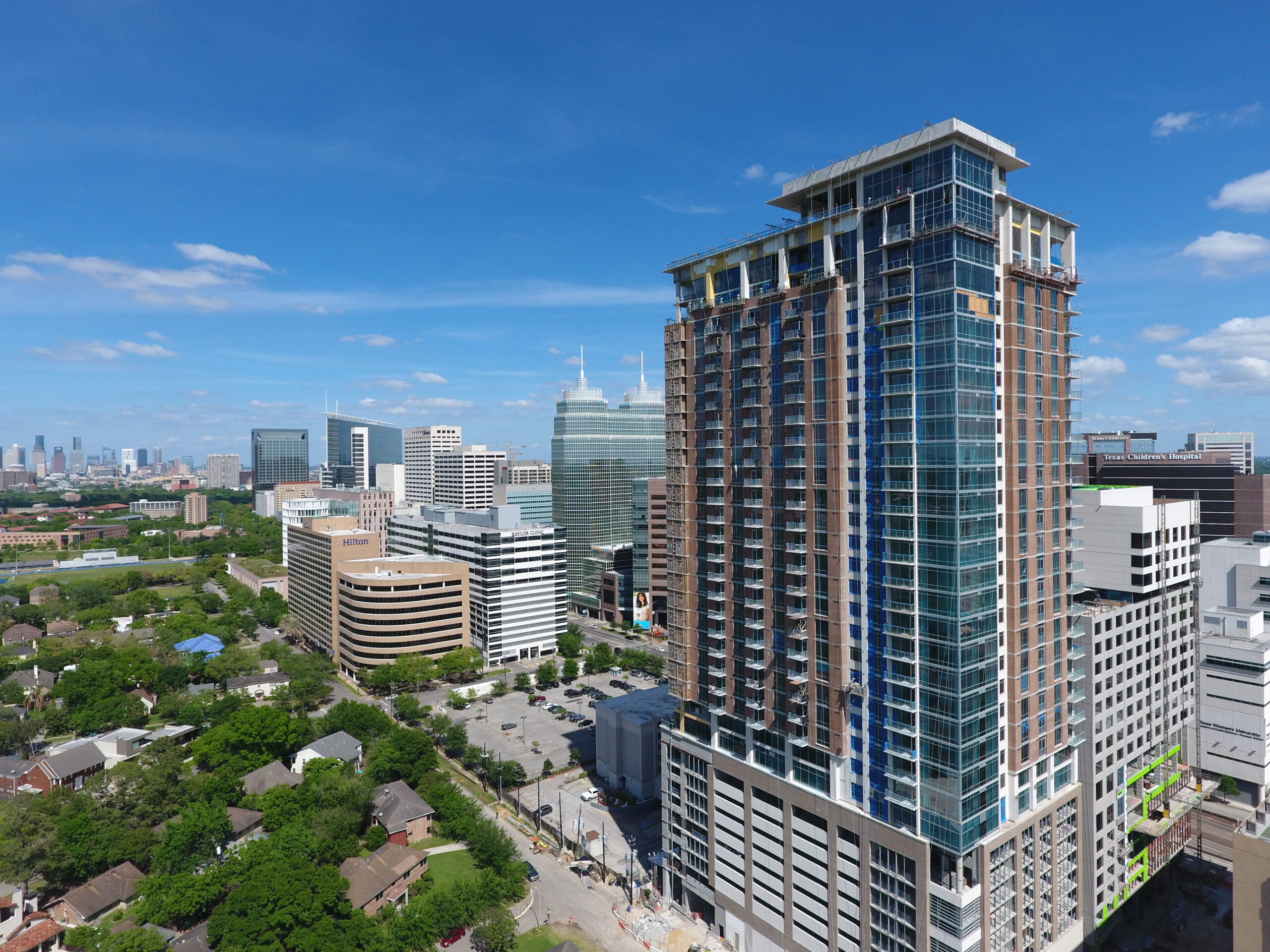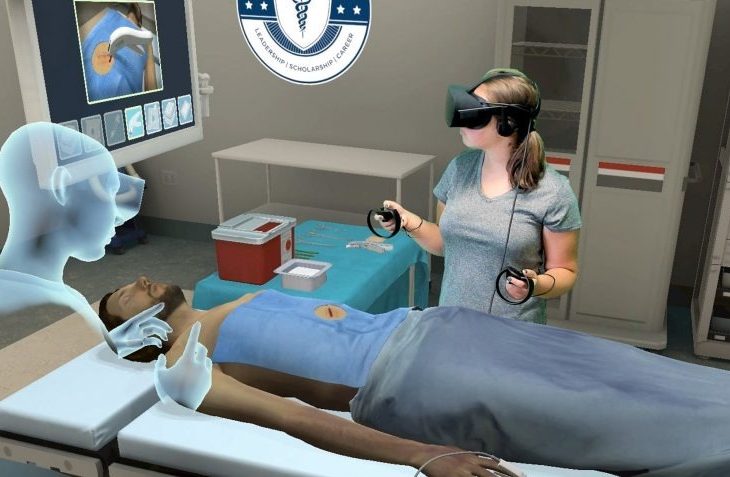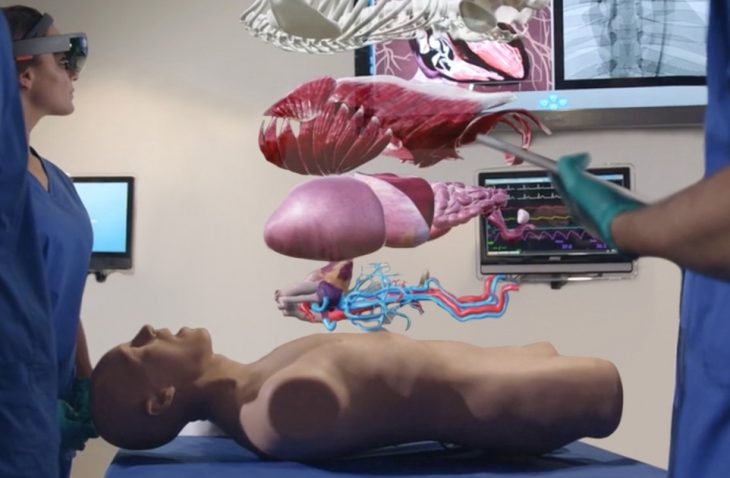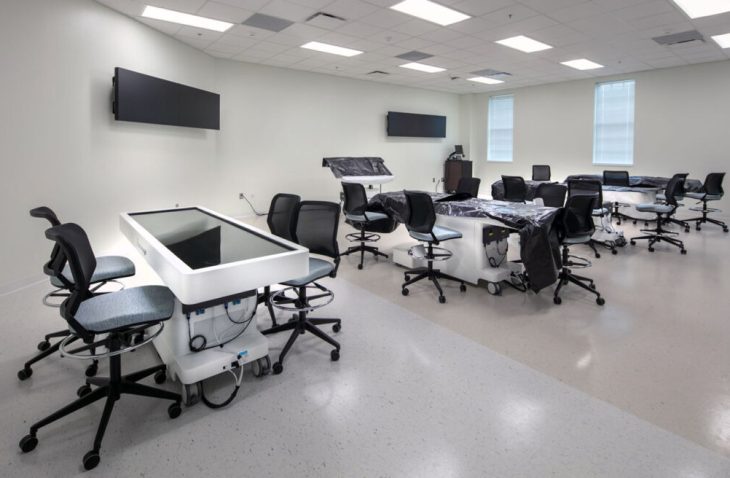Medical Simulation Suite Conceptual Design
The project: Conceptual design of a new immersive learning suite for a nationally recognized health education center.
The goal: Transform existing medical programs by creating a globally recognized learning center providing immersive technologies and simulated care experiences for students.
Design approach: The design team engaged educational leadership, care providers, and operational staff to create a unique vision for a shared immersive learning environment that would be incorporated into the facility’s already expansive and advanced higher education medical simulation center. The space was designed to include movable and retractable walls, permanent and movable stalls, sound-proofing acoustic ceiling panels, flexible lighting zones, and advanced technology and audio-visual capabilities throughout the suite.
Challenge: Provide the technology infrastructure needed to support VR/AR/MR activities. Solution: IMEG provided healthcare information technology (HIT) design and technology services including audio/visual systems design for several interactive digital displays and video walls; mobile collaborative digital solutions; and switching, processing, control, live streaming, recording, and archiving of the VR/AR/MR simulation suite activities. Acoustic design supports multi-use, single-use, and multi-location experiences and scenarios. The team also evaluated the adjustment of power supplies, Wi-Fi coverage, and overall network bandwidth to address the different immersive use cases for internal use as well as external broadcasting.
Challenge: Support the varying indoor environmental and technology needs of the various spaces in the suite, including dedicated stalls/virtual rooms, immersive enclosed learning rooms, and flexible learning spaces. Solution: Zoned intelligent lighting and climate control is provided throughout the suite. In addition, acoustics design accommodates the center’s retractable wall options and focused immersive learning scenarios. The design also integrates with the building’s existing room scheduling and learning management system (LMS), and the security design allows for controlled and monitored use of the virtual, augmented, and mixed reality lenses and other equipment.
Expected outcome: The Immersive Learning Suite is designed to accommodate over 1,500 immersive learning experiences yearly, enable more than 75 percent of educators to develop and facilitate immersive scenarios, and support a dedicated Immersive Learning Suite staff and team.
